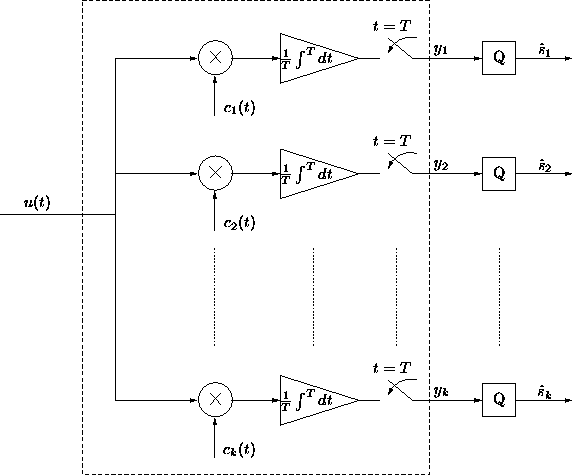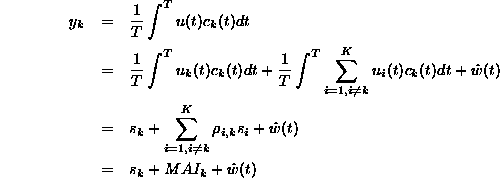
Figure 3.1: Conventional DS-CDMA Detector.

The conventional detector![]() , also known as
the matched filter detector,
simply correlates the received signal with the desired user's time
reversed spreading
waveform, and samples the output at the bit rate. This method of detection
comes straight from single user designs. It does not take into account any
other users in the system or channel dynamics and therefore is not robust to
asynchronism, fading channels, or pn sequences with substantial cross
correlation. A model of the conventional detector is shown in figure
3.1. Note that the chip matched pulse shaping filter is
not shown
separately, because the pulse-shape is included in
, also known as
the matched filter detector,
simply correlates the received signal with the desired user's time
reversed spreading
waveform, and samples the output at the bit rate. This method of detection
comes straight from single user designs. It does not take into account any
other users in the system or channel dynamics and therefore is not robust to
asynchronism, fading channels, or pn sequences with substantial cross
correlation. A model of the conventional detector is shown in figure
3.1. Note that the chip matched pulse shaping filter is
not shown
separately, because the pulse-shape is included in ![]() . Assuming a bit
synchronous system with no channel dynamics or
power variations, the output
of the conventional detector is
defined as
. Assuming a bit
synchronous system with no channel dynamics or
power variations, the output
of the conventional detector is
defined as

This near-far problem can be overcome by using power control, but this necessitates an increase in complexity at both the receiver and the transmitter. Power control can be implemented in two different ways. The mobile unit can detect the power of the received base station signal and transmit at the inverse of the power. The other option is for the base station to transmit instructions to the mobile units. Another way of reducing MAI is the use of sectored antennas. These antenna can focus on a certain area of coverage, eliminating affects of users in different sectors. In the IS-95 system, detectors matching the random spreading code are used to receive the data. In order to overcome the MAI and the near-far effect, a combination of source coding and power control is used.
So we can conclude that the matched filter detector will perform optimally in a synchronous system with no channel ISI, orthogonal spreading codes, equal power users, and no neighboring cell interference. The desirable property of the matched filter is its very low computational complexity. The question really is, ``How poorly will it perform when these conditions are not met?'' We can use the simulation tools, as done in section 5, to make some observations which will help us answer this question.